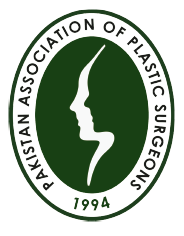Sarcoma
A sarcoma is a disease of the body’s connective tissues, like bone, muscle, ligament and fat.
Sarcomas, which develop at a deeper level than the majority of other cancers, are frequently discovered late and at an advanced stage. Since they emerge from a scope of various tissue-types, sarcomas change generally in structure. They can influence individuals of any age yet are by and large uncommon, representing just 1% of all diseases analyzed in the UK – around 2,400 cases every year.
Sarcoma frequently necessitates extensive surgical treatment that should be performed in specialized facilities. A patient’s circumstances are the focus of individualized treatment. If surgery is performed promptly and thoroughly, the prognosis can be favorable.
What causes this condition?
As sarcoma influences various individuals in better places, it is hard to give a reasonable single image of the condition – or a patient’s encounter of it. A patient’s leg is the most commonly affected limb in approximately 55% of sarcoma cases; 15% of the cases involve the head, neck, or trunk, while the remaining cases involve the abdominal area.
Sarcomas fall into three general classifications – delicate tissue sarcomas, essential bone diseases or osteosarcomas, and gastro-digestive stromal cancers (or Significance), which is the most well-known. Soft tissue sarcomas typically get their names from the tissue from which they originate. For instance, cartilage-derived sarcomas are called chondrosarcomas, while smooth muscle-derived sarcomas are called leiomyosarcomas.
The reasons for most sarcomas are obscure. A predisposition to sarcoma exists in some hereditary syndromes, but the number of cases is extremely low. There is evidence that prolonged or extensive exposure to certain chemicals may also be a cause, and patients who had a particular type of eye cancer in childhood may also be at risk for sarcoma. The use of radiotherapy to treat other types of cancer may occasionally be connected to the diagnosis of sarcoma.
Sarcomas typically manifest themselves as sluggish developing knots, somewhat greater than a golf ball. You should see a doctor if you notice anything similar anywhere on your body.
What kinds of procedures are available for surgery?
To fix sarcoma, a wide nearby extraction medical procedure is required. This requires removing not only the tumor but also a portion of the surrounding tissue. Specialists will hope to accomplish clear edges of encompassing tissue, and these edges will then be dissected in a pathology lab.
Assuming plainly the infection has spread past the actual cancer, radiotherapy might be proposed. For the treatment of bone sarcomas, pre and post-medical procedure chemotherapy is frequently utilized, yet this isn’t suggested for delicate tissue cancers. Substance sarcomas answer inadequately to chemo or radiotherapy, yet can be treated with another medication called Glivec.
Reconstructive surgery will be performed after excision surgery, as it is with other types of cancer, to fill in the void left by the tumor’s removal. Contingent upon the degree of the shortage, various plastic medical procedure strategies can be utilized, yet in the real these will include folding a medical procedure.
A neighborhood fold is a piece of living tissue that is moved from one piece of the body to a contiguous region alongside the veins that keep it alive. Free fold a medical procedure is comparative in idea, however dissimilar to nearby fold move, free folds are completely detached from their unique blood supply and are reconnected involving microsurgery in the beneficiary site. The fundamental advantage of free fold a medical procedure is that specialists can fit the recreation definitively to a patient’s necessities. Contingent upon the idea of the deformity brought about by the careful extraction, specialists can make free folds either flimsy and flexible, or cumbersome and cushioned. The free fold method likewise empowers specialists to diminish what is called contributor site dreariness – and that implies decreasing the harm caused to the area from where the free fold tissue has been taken.
Who will I consider to be patient?
In 2006, direction distributed by the Public Organization of Clinical Greatness (Decent) commanded that all patients with sarcoma ought to be treated in expert units. Patients are seen by multidisciplinary teams in these sarcoma units. A multi-disciplinary sarcoma group will be composed of experts cooperating to ensure that the most ideal treatment is given.
The following should be among these specialists:
• Clinical expert medical attendant
• Pathologist
• Oncologist
• Radiologist
• Oncological specialist
• Plastic specialist
As sarcomas happen in various pieces of the body, specialists from different disciplines might be brought in to lead specific expert techniques. A spinal surgeon, for instance, might be called upon to assist in the treatment of a patient who has a spinal sarcoma.
What would it be a good idea for me to anticipate regarding treatment, strategies and results?
While sarcoma is an uncommon type of disease, quick and forceful careful treatment can prompt great outcomes. Reconstructive specialists will give their best to reestablish structure and capability in the impacted region. In order to give the patient the best possible chance of a good functional and aesthetic outcome, sensible clinical decisions will be made when evaluating the reconstruction options.
For sarcoma patients going through extraction and reconstructive medical procedure, tissues ought to be mended inside half a month. For patients requiring complex medical procedures on the chest wall or lower appendage, the recuperation time can be much longer.
At the point when a patient is experiencing sarcoma in the arm or leg, appendage rescue will be the specialist’s primary goal, despite the fact that removal can sometimes be the most conclusive treatment choice that anyone could hope to find. Amputation, which should not be regarded as a surgical failure, now has a good chance of functional recovery thanks to advancements in prosthetic limb technology.

